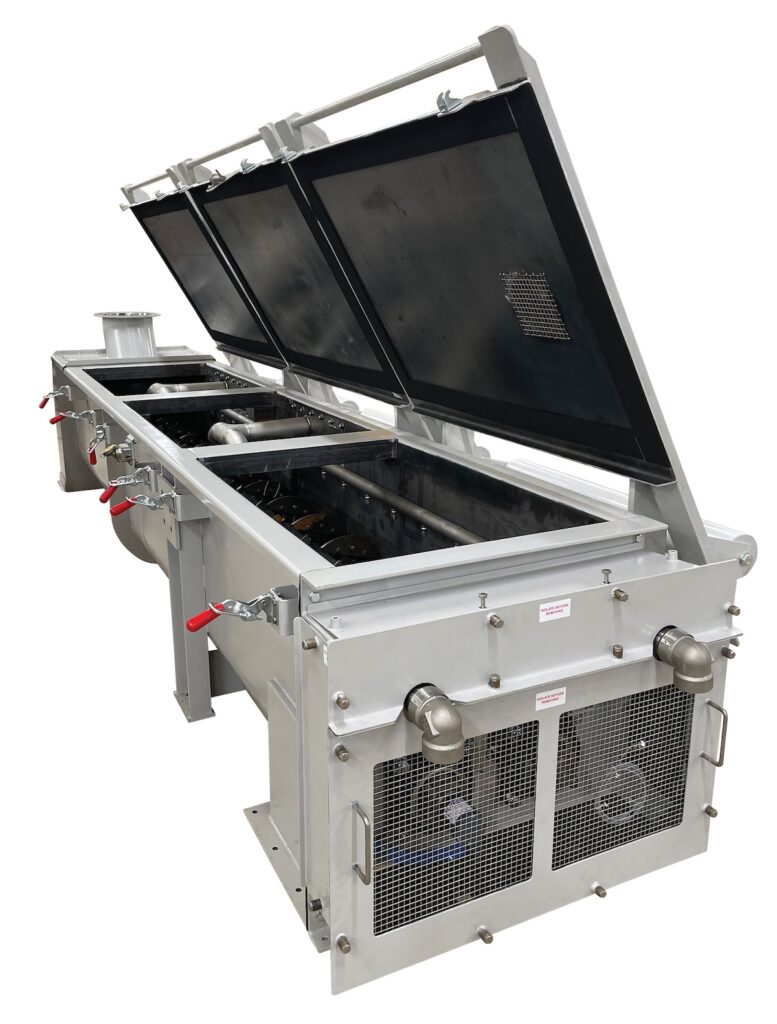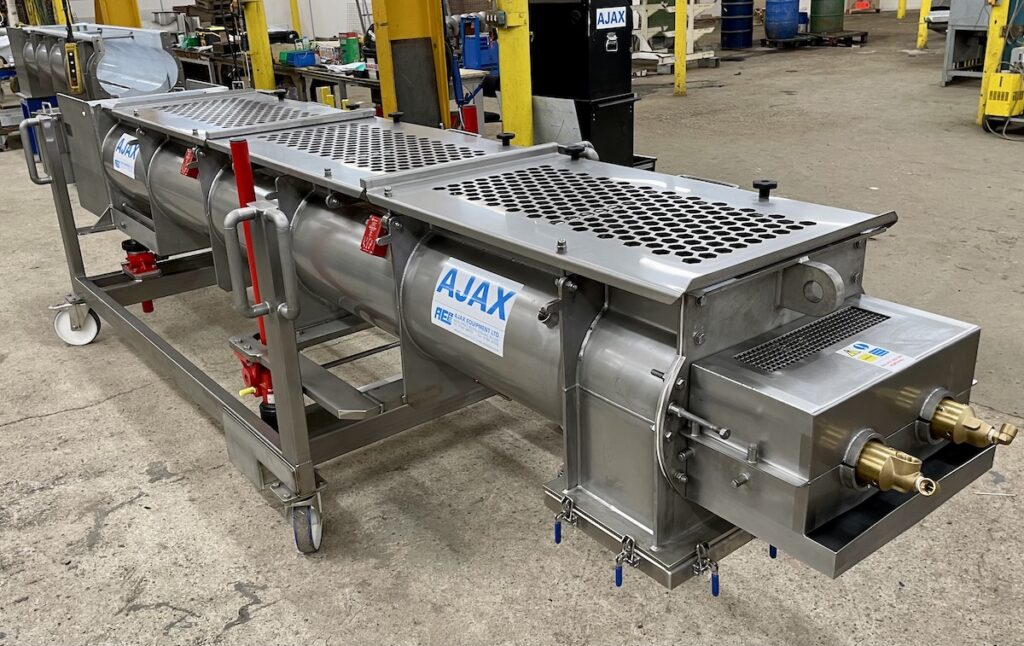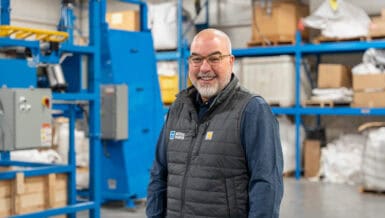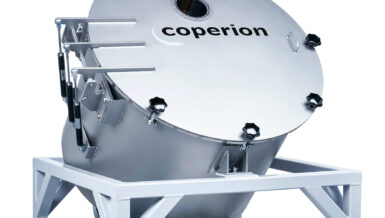Screw mixers are an extremely effective way of mixing and combining materials, as the multiple and progressive actions of a screw’s paddles or ribbons ensure the production of a high quality, homogeneous mix. However, when developing a mixer to process a range of materials with varied needs it essential the design considers these. Here are a few of the key material and process requirements to think about when designing your ideal mixer.
Batch or Continuous Process?
One of the most fundamental questions when it comes to mixing is whether to use a continuous or a batch process. Both have their advantages.
Benefits of continuous mixers include quickly achieving homogeneity, which helps to ensure a consistent mix and product quality; low work input – resulting in low energy requirements and minimal particle attrition; product transfer is integrated in the process – preventing segregation, avoiding separate sequential operations as well as intermediate storage which often has quality issues associated with it; and large volumes of material can be mixed in a smaller floorspace, advantageous when working within an existing plant. In some applications continuous mixers also offer greater flexibility.
In contrast, batch mixers can offer greater control of and flexibility in the composition of materials. This can be useful if the formulation of materials frequently changes, possibly due to variation in the materials supplied, or if the mix is being developed. Another advantage is traceability; for many products it may be required that each item can be traced to a particular production run.
Want the best of both worlds? With thoughtful design it is sometimes possible to bring certain benefits from one type of mixer to the other. A recent continuous mixer produced by Ajax Equipment for chocolate production includes the ability to switch to batch mode, allowing the mixer to hold and maintain the condition of the mix should a manufacturing issue occur in another part of the line.
While for polymer production in South Korea, Ajax developed a vertical screw blender which allowed batches of up to 8 tonnes polymer powder and additives to be mixed in relatively small floorspace. Combining twin vertical ‘fountain’ mixing screws with mass flow design, the blender’s augers and internal hopper design work together to provide blending efficiency through optimum flow behaviour of the polymer and the efficient high recirculation rate the screws generate. Movement of bulk materials is always dependent on the frictional properties against contact surfaces and against other particles; the bulk’s cohesion or shear strength similarly affect how materials flow in a dry or wet, separate or mixed condition.
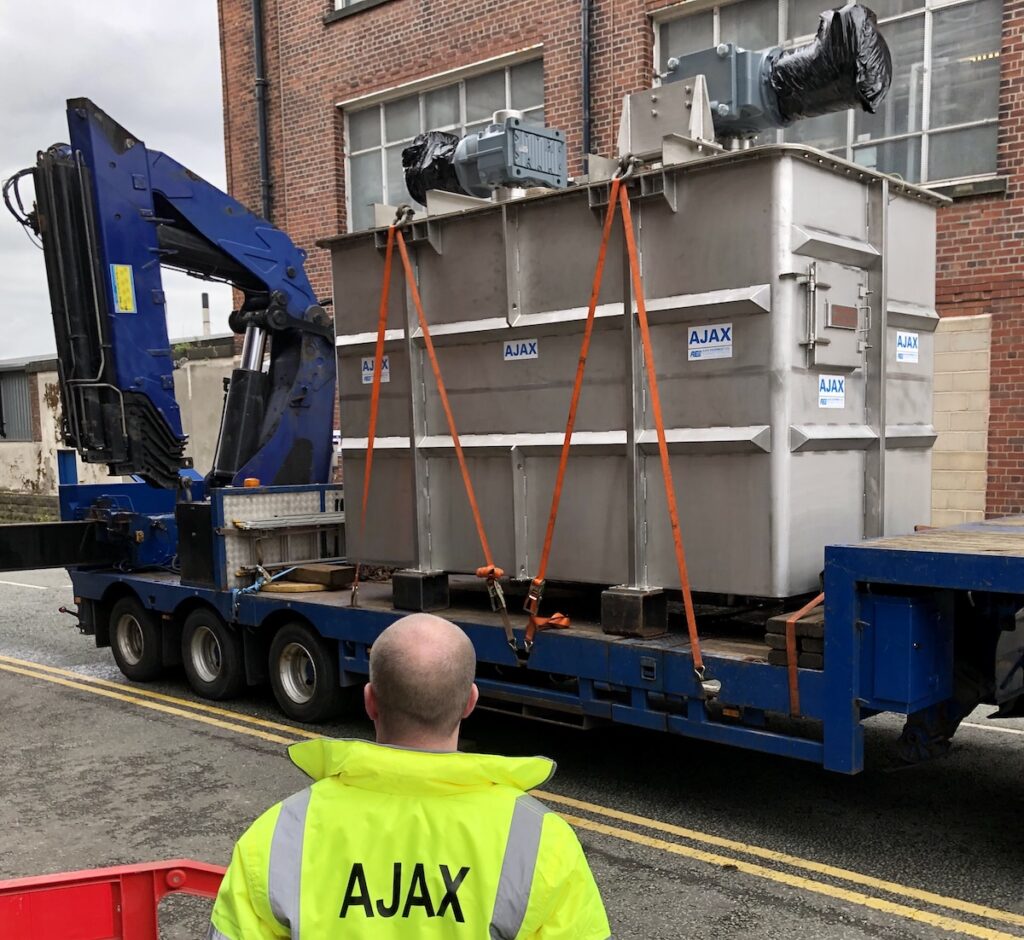
Single or Twin Screw?
Whether a continuous mixer needs a single or twin-screw arrangement depends on the degree of mixing required. Single screw mixers are often used for simple mixing applications that require low shear mixing such as the blending of liquid chocolate with inclusions or flavourings. A single screw limits the degree of mixing due to the lack of confining capacity. In contrast, continuous mixers with twin screws are highly flexible ‘work horses’ capable of high output rates.
With a twin-screw mixer, the two intermeshing screws rotate towards each other bringing the materials to the centre of the casing and forming a triangular compression zone between the screws and casing where shear loads can develop. This mechanism allows a twin-screw mixer to input a greater amount of work, although other choices such as flight design, cross-sectional fill and rotational speed also affect the degree of mixing.
Safeguarding Material Condition
Although some materials are relatively unaffected by handling and processing, many are, with any particle attrition or damage detrimental to the final product. For example, the nuts, fruits, crispies and cereals used in the production of food and confectionery are friable, meaning care must be taken when mixing.
As mentioned previously, blending liquid chocolate with inclusions only requires a single screw, a mixing action with low shear, so the risk of damaging ingredients is less than that of a twin screw. However, when there are multiple types of inclusion these can be quite varied in their size, surface condition and density. As a result, care should still be taken to ensure that the appropriate intensity of mixing is used while avoiding trapping the inclusions between the screw’s flights and casing as well as other potential sources of damage.
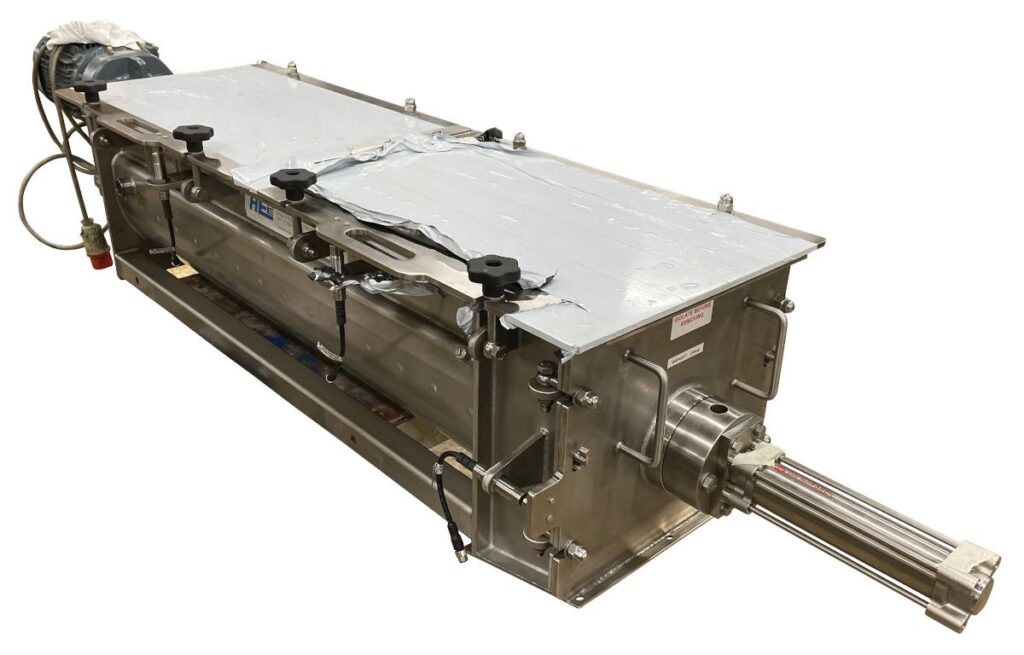
For combining a more cohesive combination of powders, liquids and solids, greater work is required to obtain the distribution of materials required and therefore a twin screw mixer would be recommended.
Granola and cereal bars, for example, sometimes combine delicate ingredients such as fruit, puffed rice or oats with cohesive liquids, including honey, syrups, and pastes. In this case it is necessary to balance the need to achieve a homogeneous mix against maintaining the integrity of the ingredients. There are number of ways to do this.
Both ribbon and paddle flights, or a combination, are used for mixing with the open form ribbon flights often used with sticky materials to inhibit build-up as well as provide a gentler mixing action. The speed the screws rotate at also affects mixing. Slow speeds are recommended with cohesive or delicate materials. Lastly, the level of cross-sectional fill; too low and the work from the intermeshing screws’ impact is lessened, too high and the material becomes overly confined, limiting the material’s movement. The ‘goldilocks’ solution is often achieved at around half full as this allows the screws to impart suitable stresses and improve dispersion.
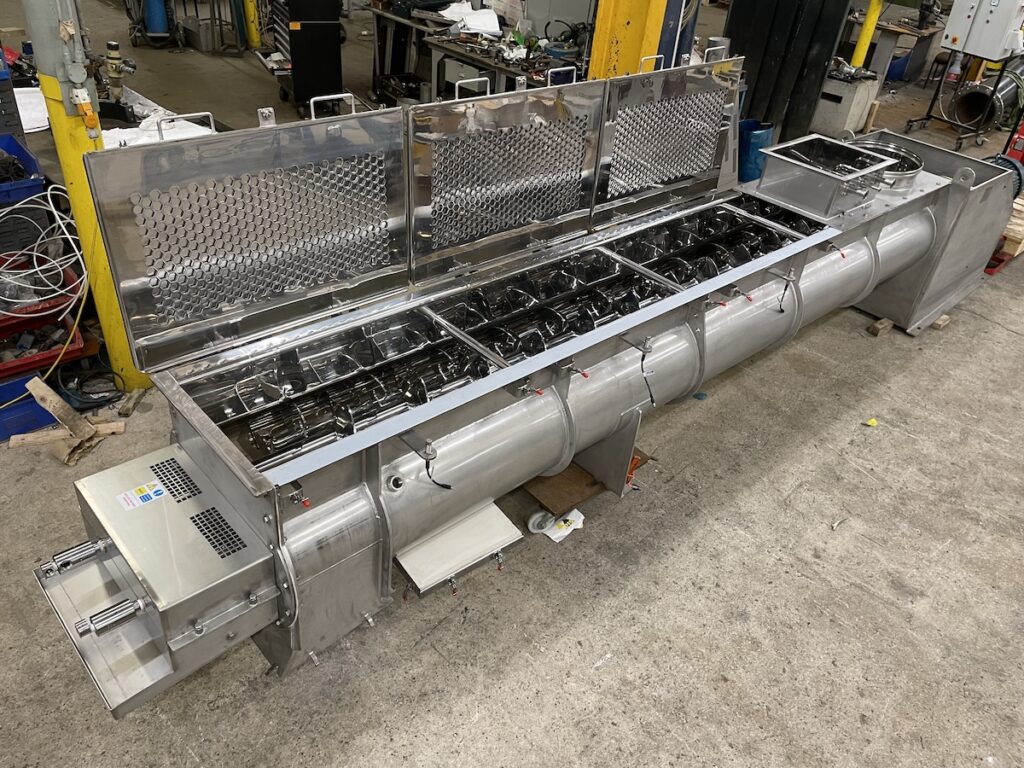
Getting the Right Temperature
Achieving the degree of mixing required is often dependant on the materials being in a certain condition. For processes like chocolate blending this means maintaining a set temperature otherwise the quality of the mix could be compromised. To keep a steady temperature of liquid chocolate a heated jacket around the mixer’s casing can be used as well as heated screw shaft if necessary.
While maintaining temperature is relatively easy, heating can be challenging as many bulk solids are poor thermal conductors, but at the same time excessive heat can be damaging. For a temperature critical application requiring large batches of limestone powder to be heated up to over 100 °C Ajax applied its cascade mixing technology to develop a thermal blender. An oil-heated, vertical recycling screw elevates the powder and cascades it down the blender’s hopper section, utilising the solid’s propensity to mass flow. Through this mixing action, any thermal difference between the regions of powder is quickly homogenised.
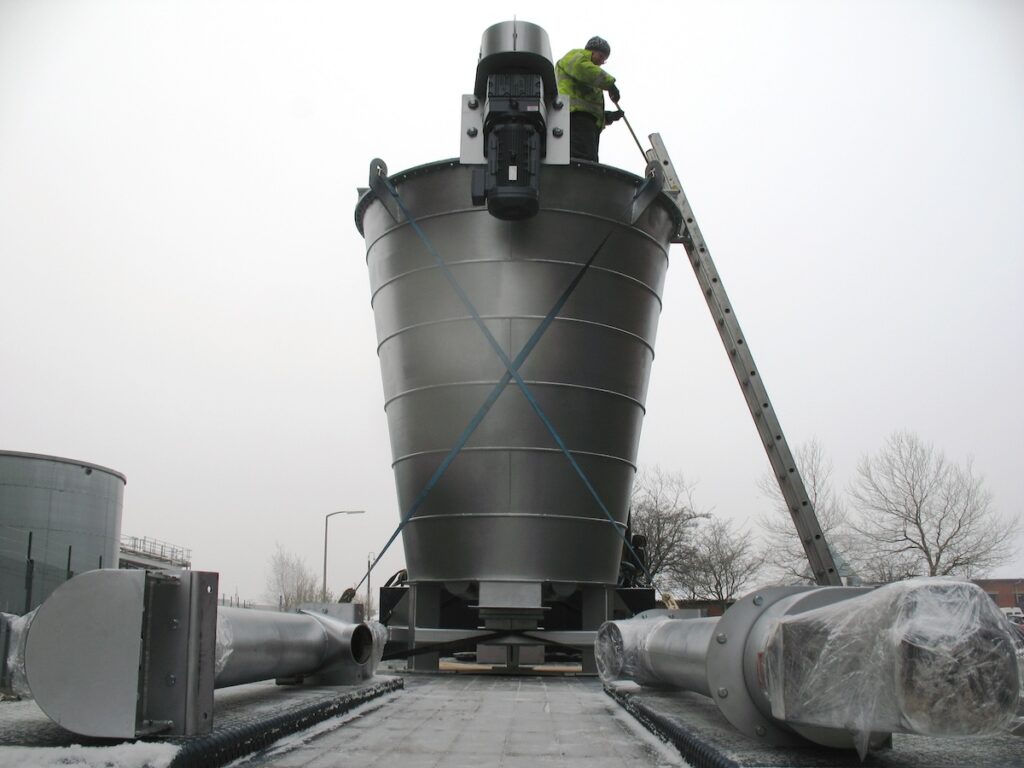
Ensuring Hygienic Processing
When producing food and pharmaceutical mixes, a high standard of hygiene is essential. Working with leading European pre-fried and frozen potato product producer, Agristo, Ajax developed a mixer design over several years with various features to ensure hygienic production. The mixer’s casing has an easy to clean profile featuring an enhanced mirror polish with crack and crevice free finish as well as the ability to hold water.
The mixer’s casing and covers create a smooth internal profile which ensures there are no dead areas where potato is allowed to accumulate. Cleaning of the mixer is helped by the counterbalanced covers, which assure ease of access, while ‘clean-in-place’ is enabled with the mixer able to hold water – allowing the screws to be run, agitating and cleaning them in situ. Once cleaning is complete, a subtle incline ensures the mixer fully drains.
Should removal of the screws be required, quick release augers deliver a speedy changeover. This is also useful when changing between products that have different mixing requirements and give great flexibility to the performance aspects of the mixer.
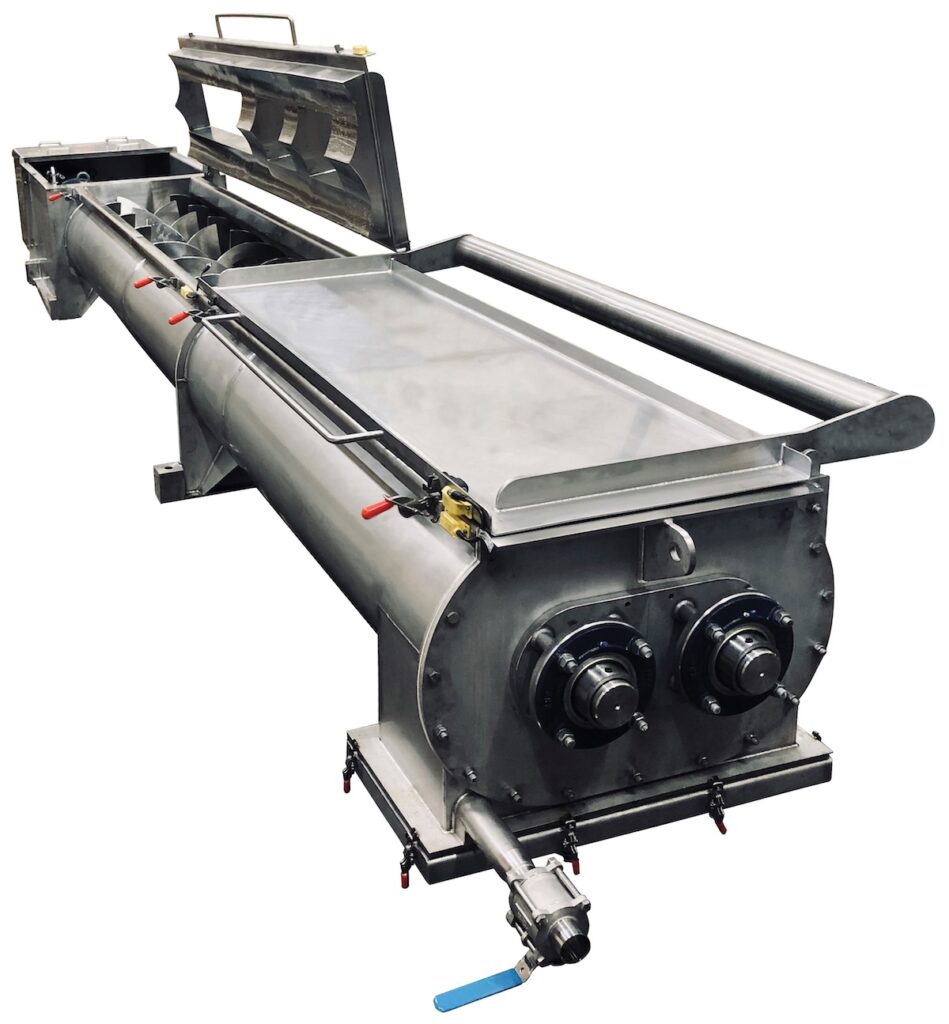
Conclusion
One of the first steps of any solids handling or processing project should be learning about the material, ideally through testing – fundamental measurements of the ingredients’ flow properties and how the mix itself behaves are critical to project success. However, whatever your mixing application – from combining polymers and plastics, transforming APCr into material safe for storage through conditioning, and coating particles, to blending chocolate with inclusions, producing granola with friable ingredients, or mixing pharmaceutical powders, thinking about the needs of the material and process can point you in the right direction.
